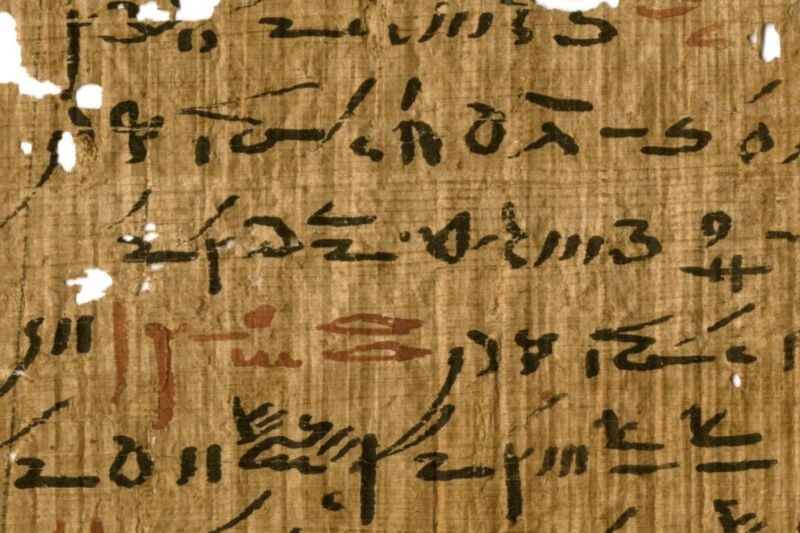
Enlarge / Detail of a medical treatise from the Tebtunis Temple Library with headings marked in red ink. (credit: The Papyrus Carlsberg Collection)
An international team of scientists used high-energy x-rays to analyze 12 fragments from ancient Egyptian papyri and found lead compounds in both red and black inks used. According to their recent paper, published in the Proceedings of the National Academy of Sciences, this is evidence that these compounds were added not for pigmentation but for their fast-drying properties, to prevent the ink from smearing as people wrote. Painters in 15th century Europe used a similar technique when developing oil paints, but this study suggests ancient Egyptians discovered it 1,400 years earlier. So the practice may have been much more widespread than previously assumed.
“Our analyses of the inks on the papyri fragments from the unique Tebtunis temple library revealed previously unknown compositions of red and black inks, particularly iron-based and lead-based compounds,” said co-author Thomas Christiansen, an Egyptologist from the University of Copenhagen.
As I've written previously, synchrotron radiation is a thin beam of very high-intensity X-rays generated within a particle accelerator. Electrons are fired into a linear accelerator to boost their speeds and then injected into a storage ring. They zoom through the ring at near-light speed, as a series of magnets bend and focus the electrons. In the process, they give off X-rays, which can then be focused down beamlines. This is useful for analyzing structure because in general, the shorter the wavelength used (and the higher the energy of the light), the finer the details one can image and/or analyze.
No comments:
Post a Comment